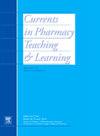通过工作整合学习培养药学学生的职业准备:合作实习导师和轮岗导师对学生表现反馈的定性分析
IF 1.4
Q3 EDUCATION, SCIENTIFIC DISCIPLINES
引用次数: 0
摘要
工作集成学习(WIL)是许多专业课程的关键组成部分,它允许学生将课堂知识应用于工作场所和实践环境。虽然大多数药学院的课程中都包括临床轮转,但很少整合合作教育(“co-op”),导致缺乏关于每种工学结合模式如何为学生的药学职业做好准备的文献。我们分析了学生的表现评估,以确定带薪实习导师和轮岗导师对学生工作/实习准备技能的看法,区分每种经历所培养的独特和互补技能。方法滑铁卢大学药学博士(PharmD)项目的学生在第二年和第三年完成三个合作实习学期,在第四年完成三个临床轮转。对3个毕业班学生的导师和导师对学生表现的定性反馈进行定性分析;两名研究人员独立编码数据,使用内容分析来确定主题。结果这两种模式都支持学生自信心的增长,与患者进行量身定制的沟通的能力,并改善与其他医疗保健提供者的合作。我们观察到,通过合作学习,学生可以获得作为跨专业团队成员的经验,并学习如何适应工作流程的变化。这为最后一年的轮转提供了基础,使学生能够专注并获得提供患者护理服务的自信。主管和导师认为,带薪实习和轮岗为学生提供了多种重要的技能,为工作/实践做好准备。合作社培养学生的工作准备技能,为学生在项目的最后一年更高级、更专注、更细致的实践技能发展做好准备。本文章由计算机程序翻译,如有差异,请以英文原文为准。
Fostering career-readiness in pharmacy students through work-integrated learning: Qualitative analysis of co-op supervisor and rotation preceptor feedback on student performance
Introduction
Work-integrated learning (WIL) is a key component of many professional programs, allowing students to apply classroom knowledge in workplace and practice settings. While most pharmacy schools include clinical rotations in their curriculum, few integrate co-operative education (“co-op”), resulting in a dearth of literature regarding how each WIL model prepares students for pharmacy careers. We analyzed student performance evaluations to identify co-op supervisors' and rotation preceptors' perceptions of students' job/practice readiness skills, distinguishing the unique and complementary skills developed by each experience.
Methods
In the University of Waterloo Doctor of Pharmacy (PharmD) program, students complete three co-op work terms in their second and third years and three clinical rotations in their fourth year. Supervisor and preceptor qualitative feedback on student performance for students in three graduating classes was qualitatively analyzed; two researchers independently coded data, using content analysis to identify themes.
Results
Both WIL models support students' growth in confidence, ability to engage in tailored communication with patients, and improved collaboration with other healthcare providers. A hierarchy of learning was observed with co-op helping students gain experience as a contributing member of an interprofessional team and learning how to adapt to workflow changes. This provided a foundation for final-year rotations allowing students to focus and gain self-assurance providing patient care services.
Discussion
Supervisors and preceptors perceive that co-op and rotations provide students with multiple important skills for job/practice readiness. Co-op's fostering of job readiness skills prepares students for more advanced, focused, and nuanced practice skill development in the program's final year.
求助全文
通过发布文献求助,成功后即可免费获取论文全文。
去求助
来源期刊

Currents in Pharmacy Teaching and Learning
EDUCATION, SCIENTIFIC DISCIPLINES-
CiteScore
2.10
自引率
16.70%
发文量
192
 求助内容:
求助内容: 应助结果提醒方式:
应助结果提醒方式:


